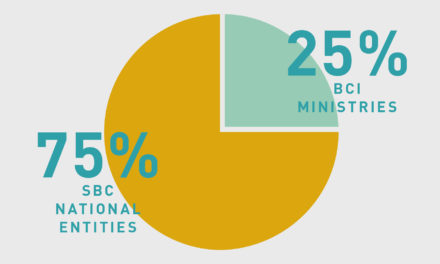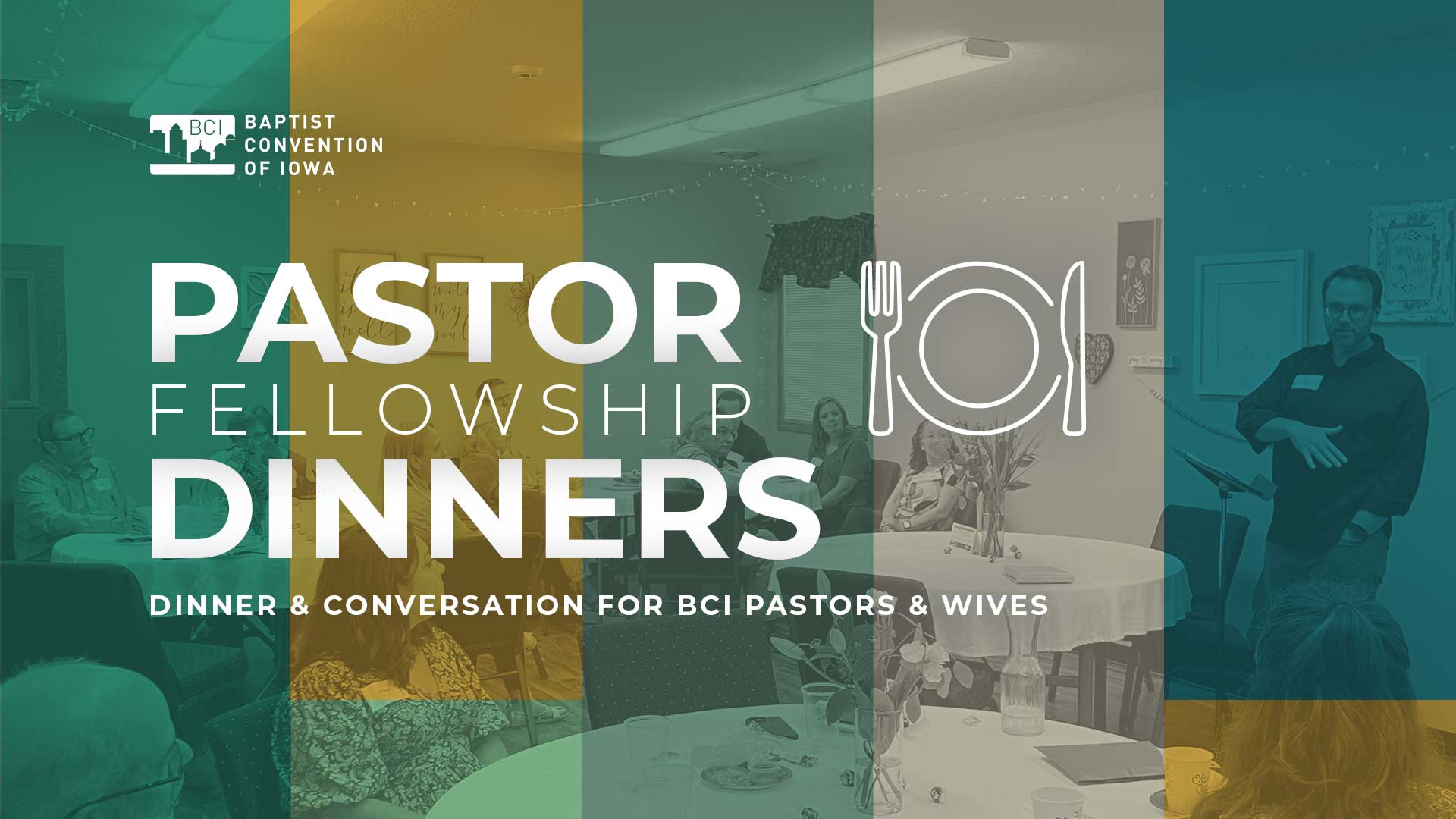EDITOR’S NOTE: Cooperative Program Sunday is April 12 in the Southern Baptist Convention.
KENOSHA, Wis. (BP) — Ohio native Lenard Tavernelli didn’t know a thing about Southern Baptists.
He was reared in the General Association of Regular Baptist Churches, part of a conservative split in 1932 from the former Northern Baptist Convention (now the American Baptist Churches USA).
But Tavernelli’s awareness of the SBC began to change on his first day at Southern Baptist Theological Seminary, where he enrolled in 2004 because friends from college were studying at the Louisville, Ky., campus.
On his first day of orientation, Tavernelli and the entire incoming class received several hours of information about the Cooperative Program, its history, purpose and effectiveness.
“I started being a Southern Baptist that day,” Tavernelli said.
Shortly thereafter, he found a Southern Baptist church home, and ever since he’s been an advocate of the way Southern Baptists cooperate together for the sake of the Gospel. Today he’s pastor of Fellowship Baptist Church in Kenosha, Wis., which gives 11 percent of undesignated offerings for missions and ministry through CP.
“Jesus calls us in Matthew 28 to go into all the world and make disciples,” Tavernelli said. “We as the church … can’t do that alone. We can’t even disciple all of America, let alone the entire world. We’re called to fulfill the Great Commission, in the spirit of the Great Commandment. The Cooperative Program helps us do that.”
The Cooperative Program is the way Southern Baptists work together for the expansion of God’s Kingdom. Churches decide how much they will contribute, either a dollar amount or a percentage of undesignated offerings. Part of CP stays in the state convention for its missions and ministries, in a percentage voted on at each state convention’s annual meeting. The rest goes through the SBC Executive Committee, which distributes CP according to a formula voted on at the SBC’s annual meeting.
A teen’s recollection
For Adam Blosser, the words “Cooperative Program” didn’t resonate until years after he began hearing them.
“I suppose I heard about the Cooperative Program all my life, but the first I remember hearing about it, I was a teenager,” Blosser, pastor of Drakes Branch (Va.) Baptist Church, told Baptist Press. “The first time I understood it was when I went to seminary, and CP paid half my tuition.”
“We believe the Cooperative Program is the best way for us to fund missions and theological education,” Blosser said. “We believe in the work that the [International and North American mission boards] are doing for the sake of the Gospel, and our church has benefitted greatly from the work of the Southern Baptist seminaries in training pastors.
“We want to give generously that the Kingdom of God may advance,” the pastor continued. “Christ will build His church. We want to be part of that. We want to be counted faithful with the little.”
Pastor to pastor
Relationships with other pastors taught Paul Kim, pastor of Good Community Church in Torrance, Calif., about the Cooperative Program.
Good Community Church, which began in 1991, focused most of its missions efforts on helping other Korean churches and missionaries. They responded to the needs of their countrymen who didn’t have the undergirding support of a major denomination, while giving a small amount to missions through the Cooperative Program.
But as Kim’s relationships grew with other pastors and leaders in the Southern Baptist Convention, he became aware that Good Community Church didn’t have a good accountability system for all its missions support.
Kim came to realize the SBC provided the accountability, financial integrity, missions zeal and doctrinal purity the church wanted to be part of, and he directed the church to work primarily through the Cooperative Program and the SBC’s IMB and NAMB.
Once Kim refocused the church on missions, both through the Cooperative Program and missions opportunities locally, statewide and globally, the Good Community congregation began to grow. It doubled in size, from 500 to 1,000, in Sunday morning worship, and increased its CP support of missions from an annual $1,200 to $33,000.
“As we learn more, we give more,” said David Yoon, the church’s English language pastor. “As we do more, we give more. The Cooperative Program is the way we all work together in obedience to Jesus’ last command, the Great Commission: ‘As you go, make disciples of all nations.'”
For the 2015 church year in the Southern Baptist Convention, 50.41 percent of what is sent to the Executive Committee is forwarded on to the International Mission Board; 22.79 percent to the SBC’s North American Mission Board; 22.16 percent to the SBC’s six theological seminaries and the Historical Library and Archives; 1.65 percent to the Ethics & Religious Liberty Commission; and 2.99 percent for the SBC operating budget.
In the 2014 SBC Books of Reports, the IMB reported supporting more than 4,800 missionaries, who were involved in starting 6,200 churches and more than 114,000 baptisms; NAMB was involved in starting 936 congregations across North America; the SBC’s six seminaries had 15,993 Southern Baptist students, with total enrollment at 18,259; and the ERLC, in numerous ways, promoted Southern Baptist views on ethics and morals 1,200 times.
Karen L. Willoughby is a writer based in Mapleton, Utah.
Reprinted from Baptist Press (www.baptistpress.com).
Baptist Press (BP) is the official news service of the Southern Baptist Convention and provides news to the 42 state Baptist papers. BP reports on missions, ministry and witness advanced through the Cooperative Program and on news related to Southern Baptists’ concerns nationally and globally.









